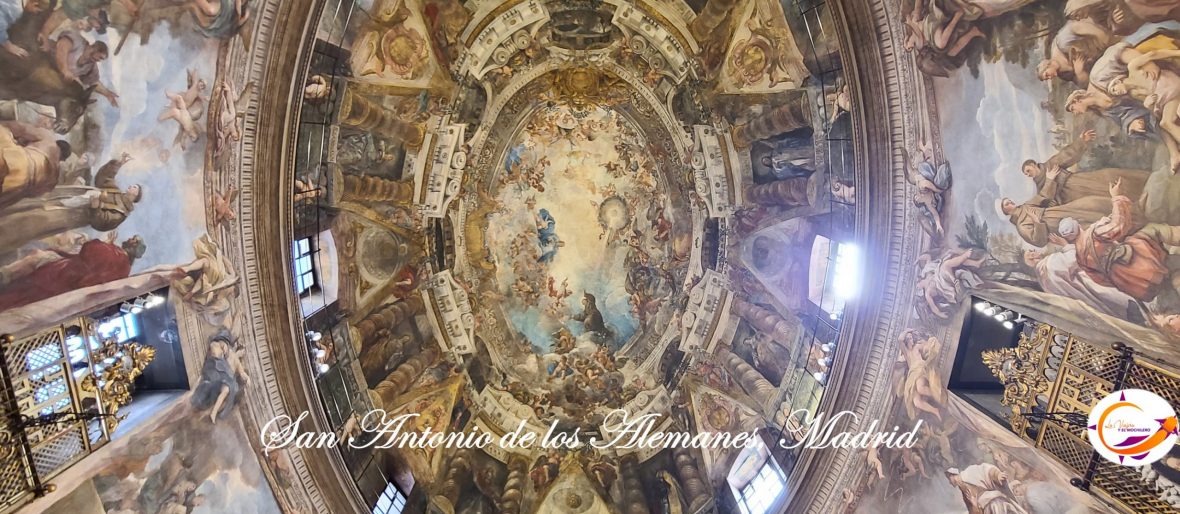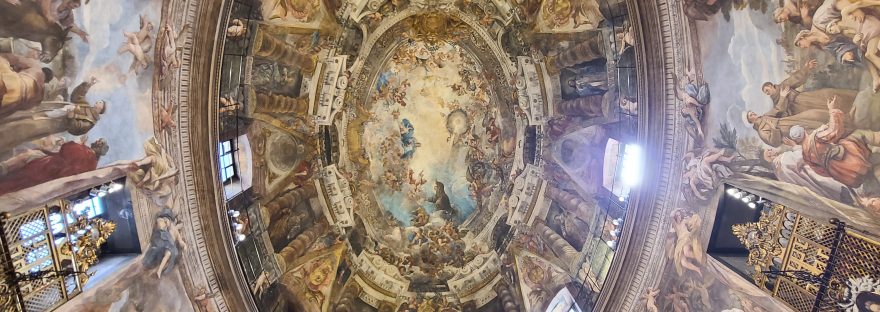The first thing that caught our attention about this church is precisely its name, “San Antonio de los Alemanes” or Saint Anthony of the Germans. It was founded by Philip III at the beginning of the 17th century, when Portugal was part of the Hispanic kingdoms under the Habsburgs. The mission of both the church and the adjoining hospital was to receive the sick and Portuguese pilgrims passing through Madrid. For this reason it was originally called Saint Anthony of the Portuguese.
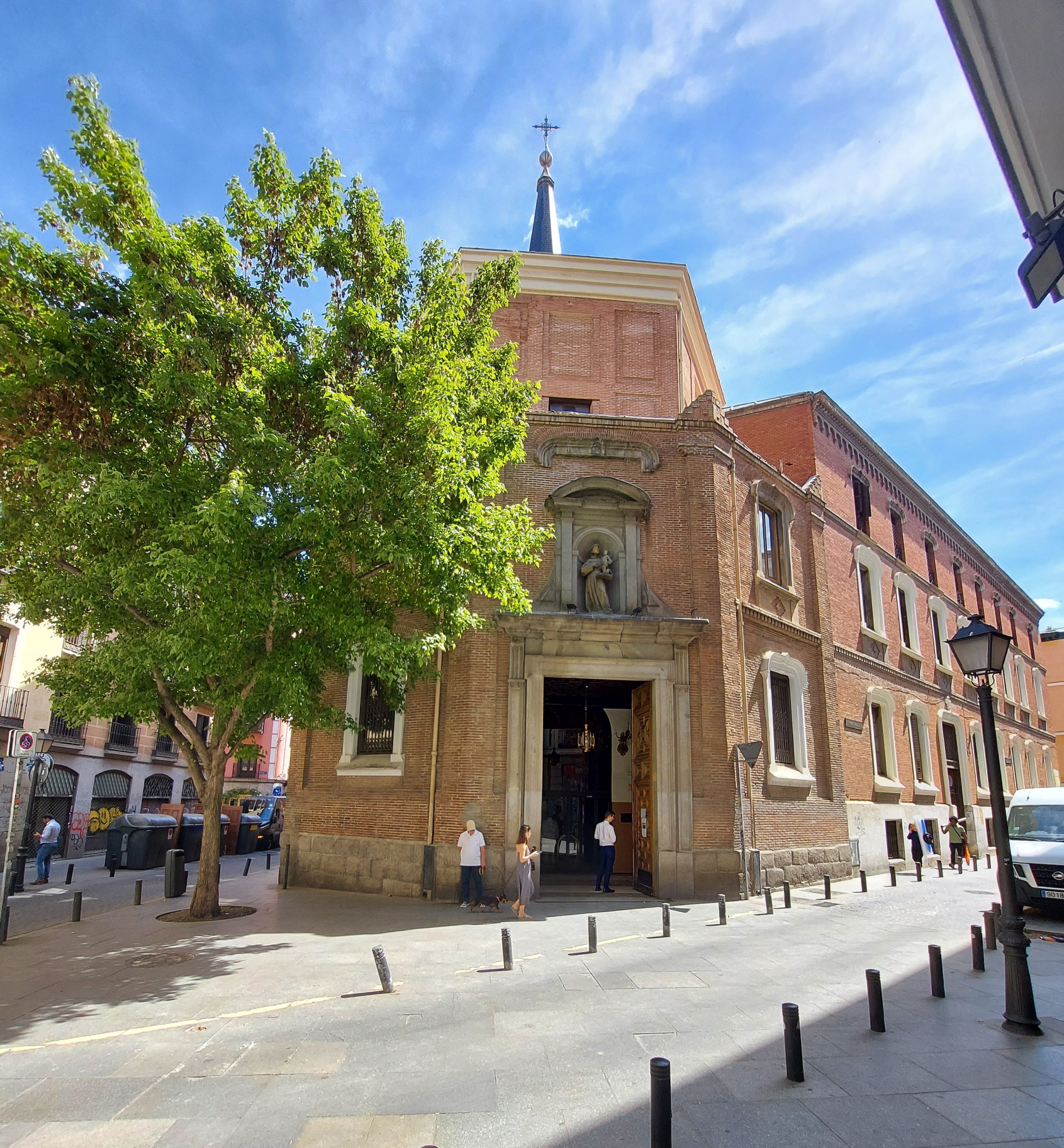
However, when Portugal ceased to be part of the Spanish Empire, Queen Mariana of Austria, second wife of Philip IV, ceded it in 1668 to the community of German Catholics, changing the name of the hospital and the church. The German community was very numerous in the Court since the arrival of the queen consort Mariana of Neoburg. Even so, the dedication to the Portuguese saint, St. Anthony of Padua, was preserved.
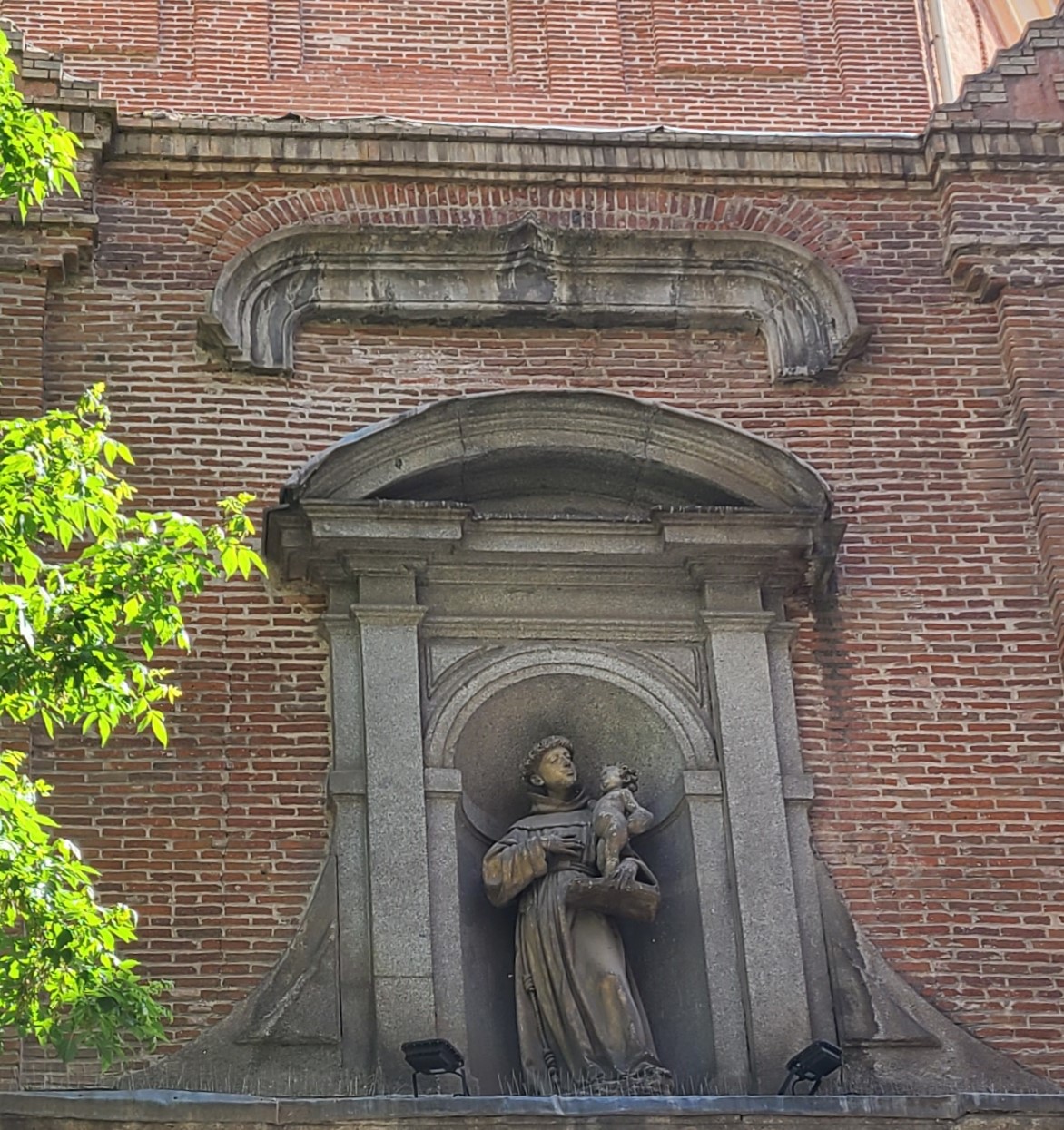
The construction of the Church began in 1624, and it was not until 1633 that the work was completed. This structure is of the Madrilenian Baroque type, where low-cost materials such as brick and plaster were used in its construction. With a sober façade, the most outstanding detail is the stone image of San Antonio de Padua in a niche above the entrance door. Instead of a dome, the exterior has an octagonal spire. Its design is attributed to the Jesuit Pedro Sánchez.
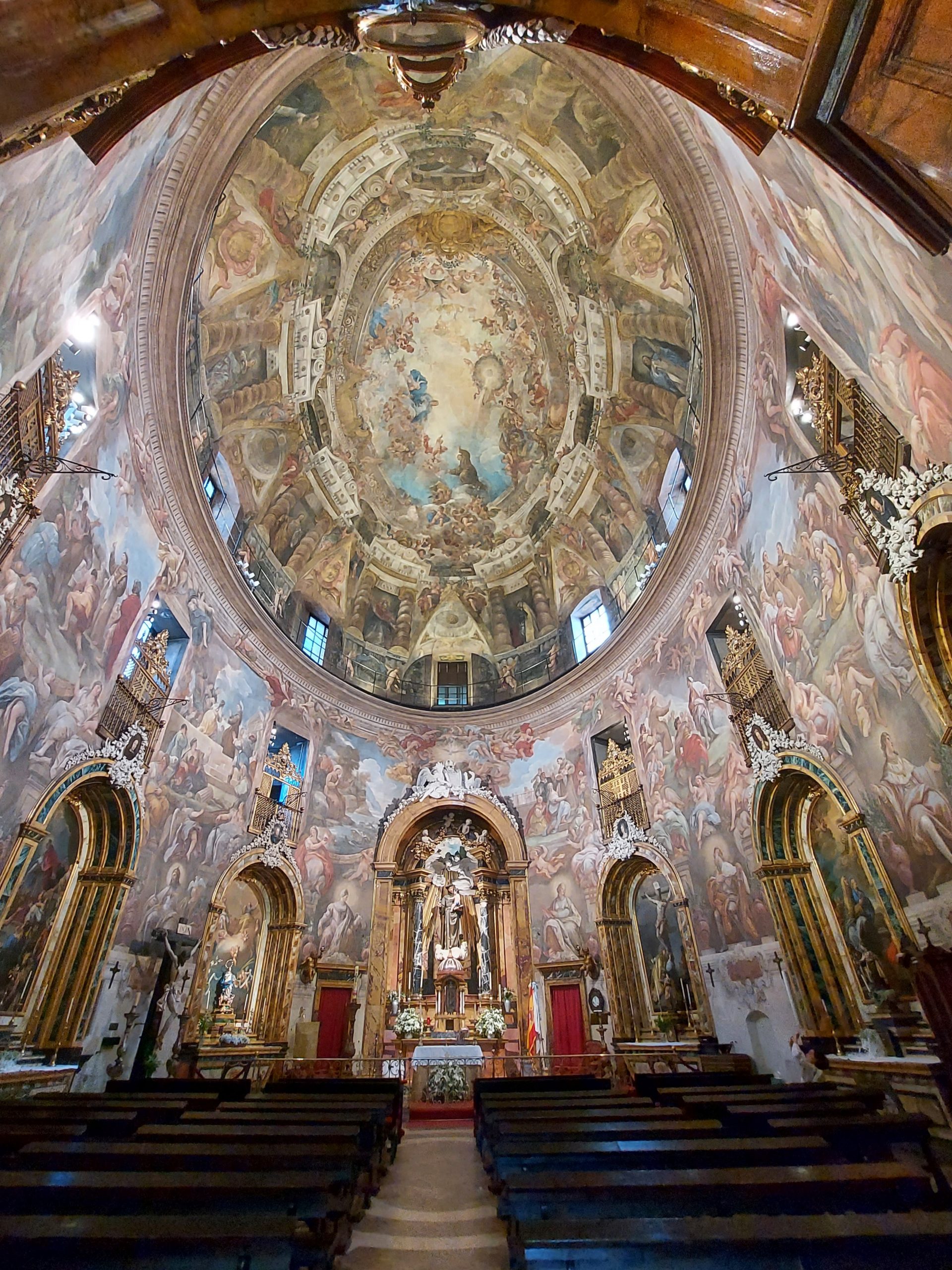
It is not precisely the exterior of the Church of San Antonio de los Alemanes that attracts attention. Upon entering it is the interior, that dazzles, specially when one observes its elliptical floor plan and its decoration, completely painted in fresco. It is what has been called “baroque illusionism”, where decorative elements, such as the fresco painting and the sculptures of the altarpieces, join the architecture, creating a magnificent effect of movement and color. Forty years after its construction was completed, this elaborate and magnificent interior decoration was added.
The dome of the Church of Saint Anthony is of large dimensions and elliptical shape . Painted by Francisco Rizzi in 1662, in the central part is seen the glory of St. Anthony, a scene in which the saint receives the Child Jesus from the hands of the Virgin. It is precisely here where the “trompe l’oeil” or illusionism that we mentioned before is observed, where the architectural elements of the structure are not real, they are painted, giving a general air of grandeur, without the need to create weight to the structure. In addition, it was a viable and economical solution at the time.
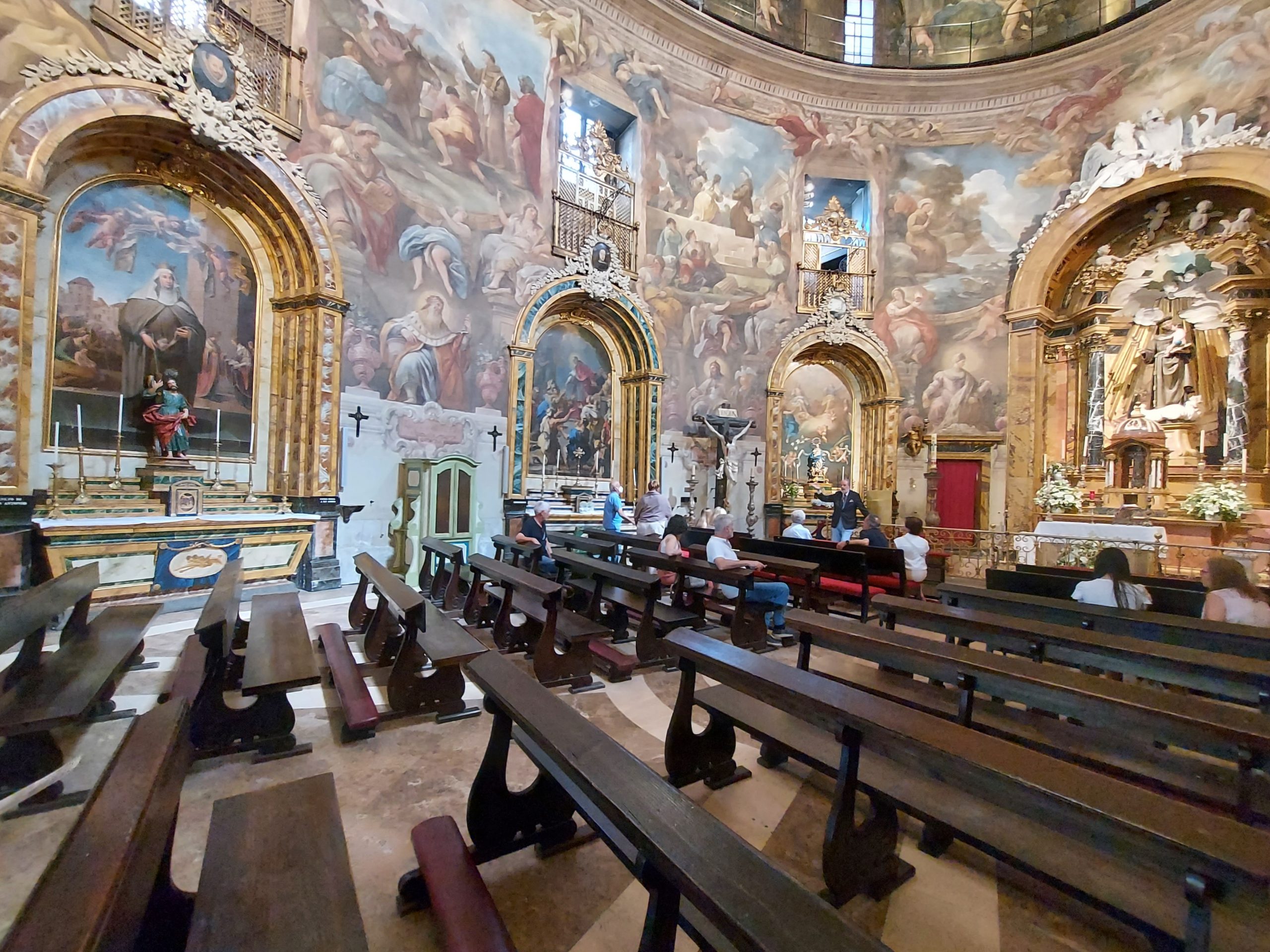
The curved walls of the church were decorated by Luca Giordano, who frescoed several miracles of the Saint, as well as a series of emperors, kings and princes.
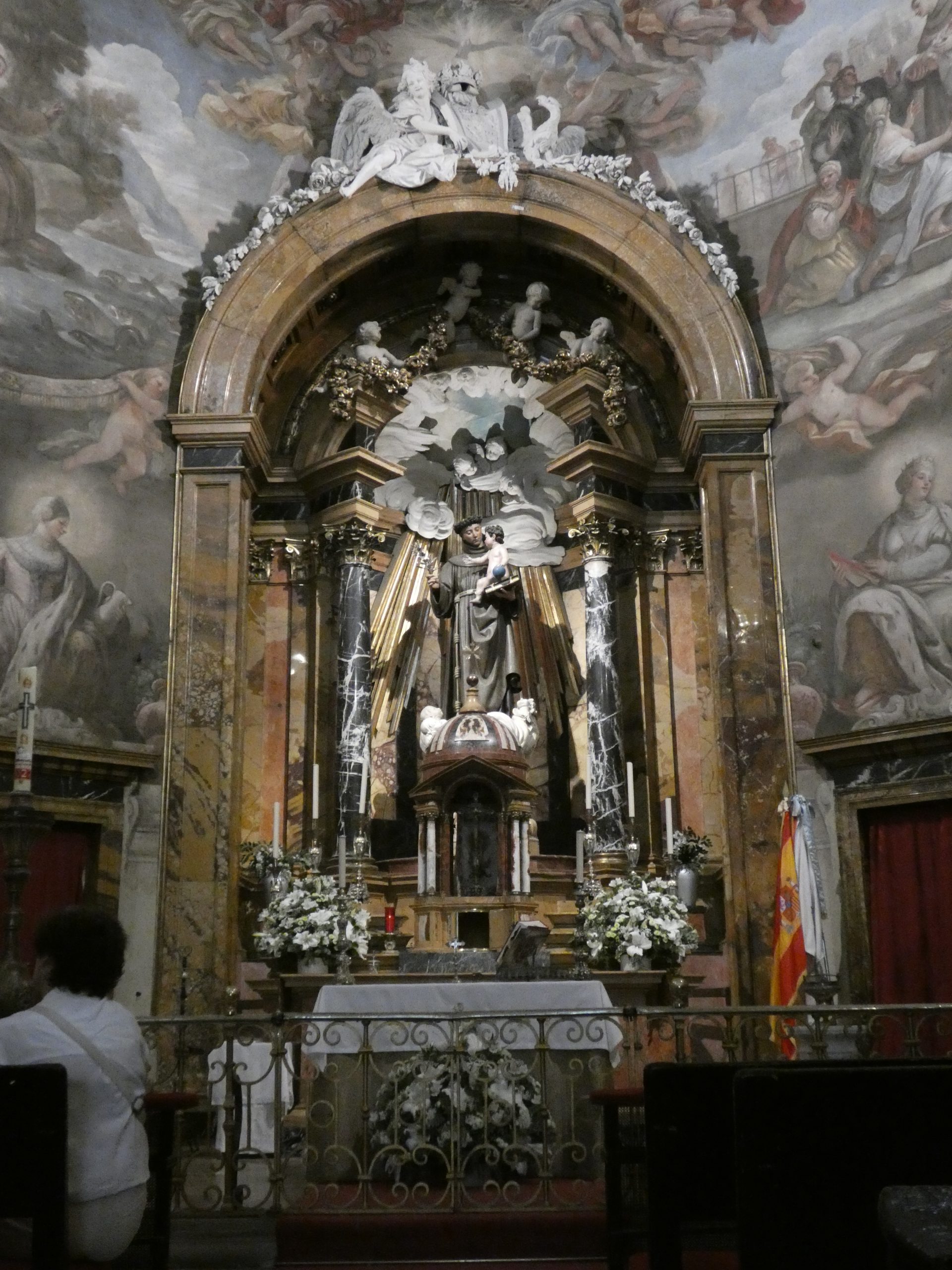
The main altarpiece of the Church, is the work of Miguel Fernandez and dates to 1765. This work replaced a baroque altarpiece from 1724, which was burned down. In the altarpiece that we observe is the sculpture of San Anthony with the Child, masterpiece of Manuel Pereira, and a glory of angels, work of Francisco Gutiérrez.
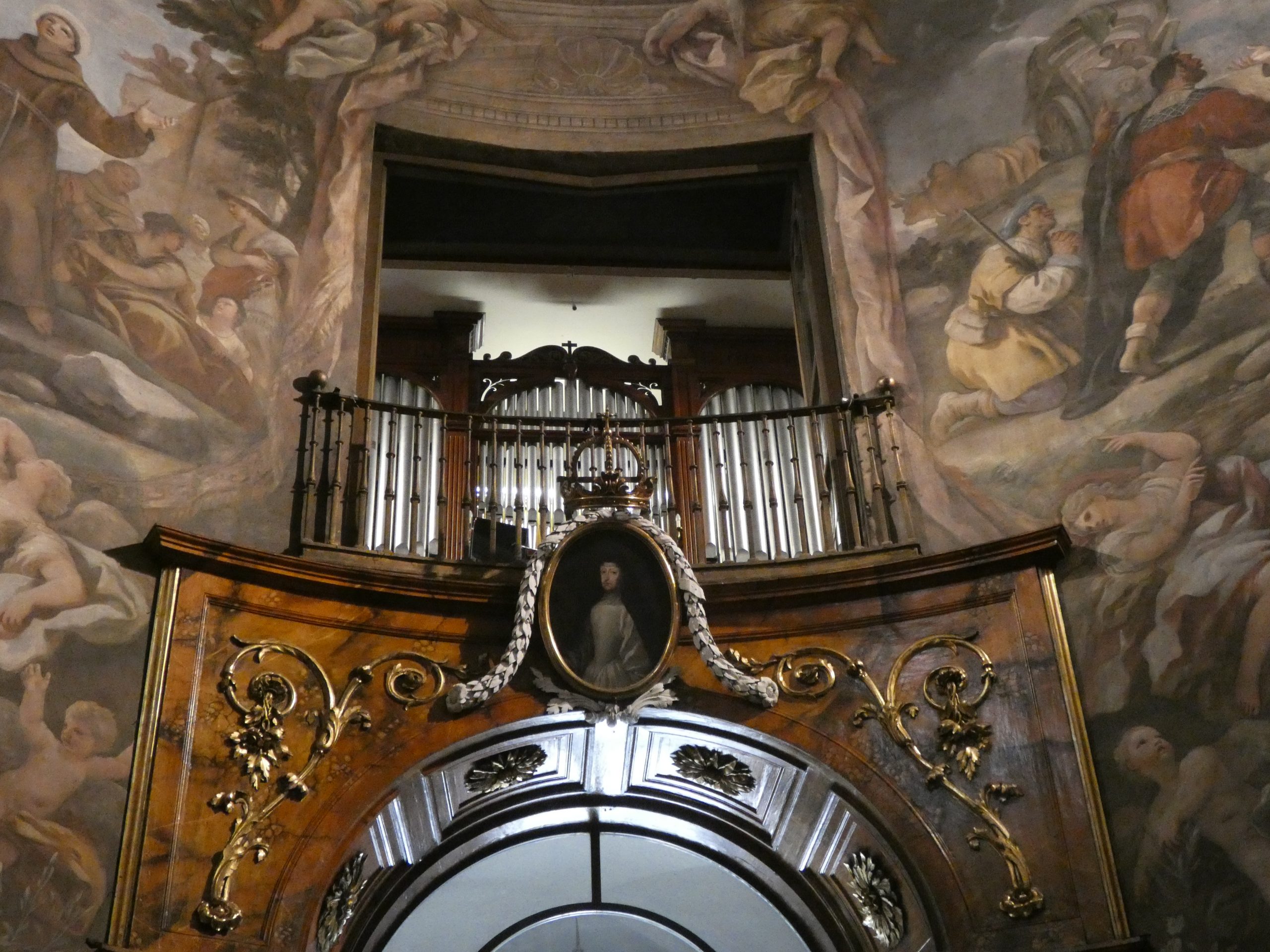
On each side of the main altar there are three altarpieces with slightly sunken paintings and medallions of Spanish kings. The medallion of Mariana of Austria, due to her importance in the history of the temple, is above the entrance, just below where the organ is located. The current Organ dates to 1923, being the third organ used. The original organ dated back to 1630.
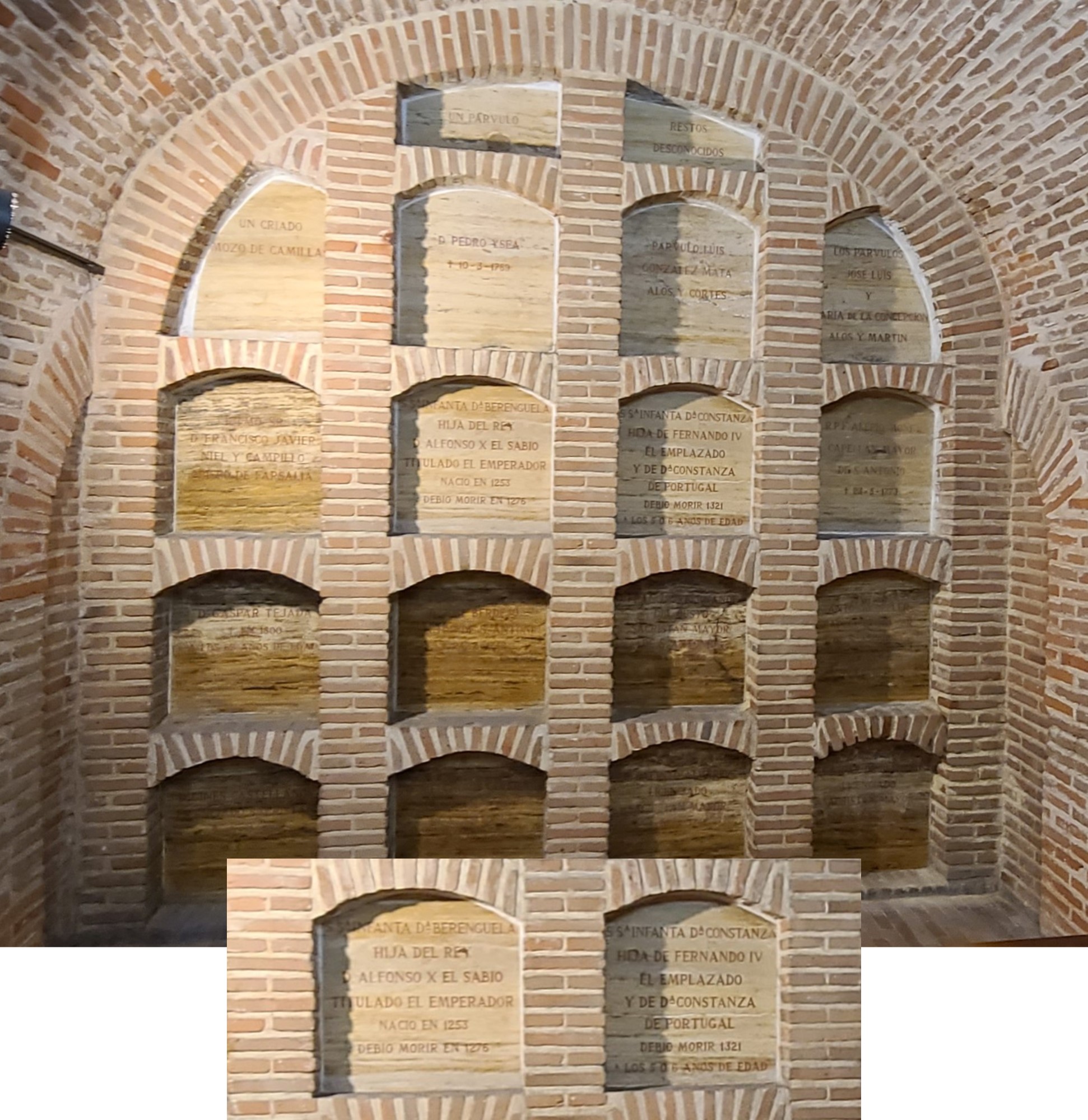
In the crypt of the church lie the remains of two “infantas” of Castile; Berenguela of Castile (1253-1300), daughter of Alfonso X the Wise and Violante of Aragon and Constanza of Castile (1308-1310), daughter of Ferdinand IV of Castile and Constanza of Portugal.
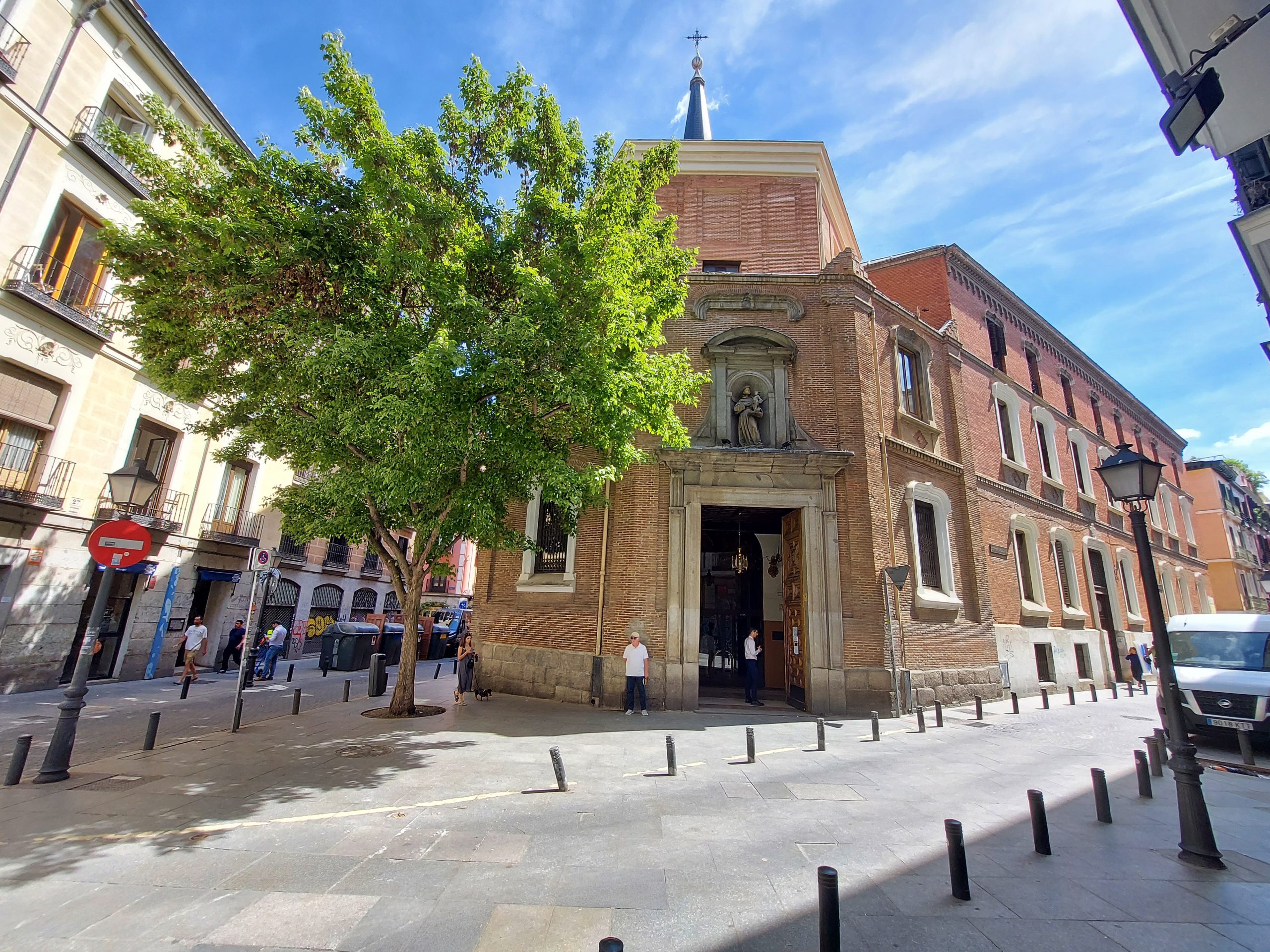
The church and the hospital became part of the “Real Hermandad del Refugio y Piedad” (Royal Brotherhood of Refuge and Piety) in 1701. This institution is committed to help the needy of Madrid. Currently, it is responsible for offering worship services in it, as well as organizing visits from Monday to Saturday and on occasions, they organize classical music concerts. The Royal Church of Saint Anthony of the Germans in 1972, was declared a National Historic-Artistic Monument.
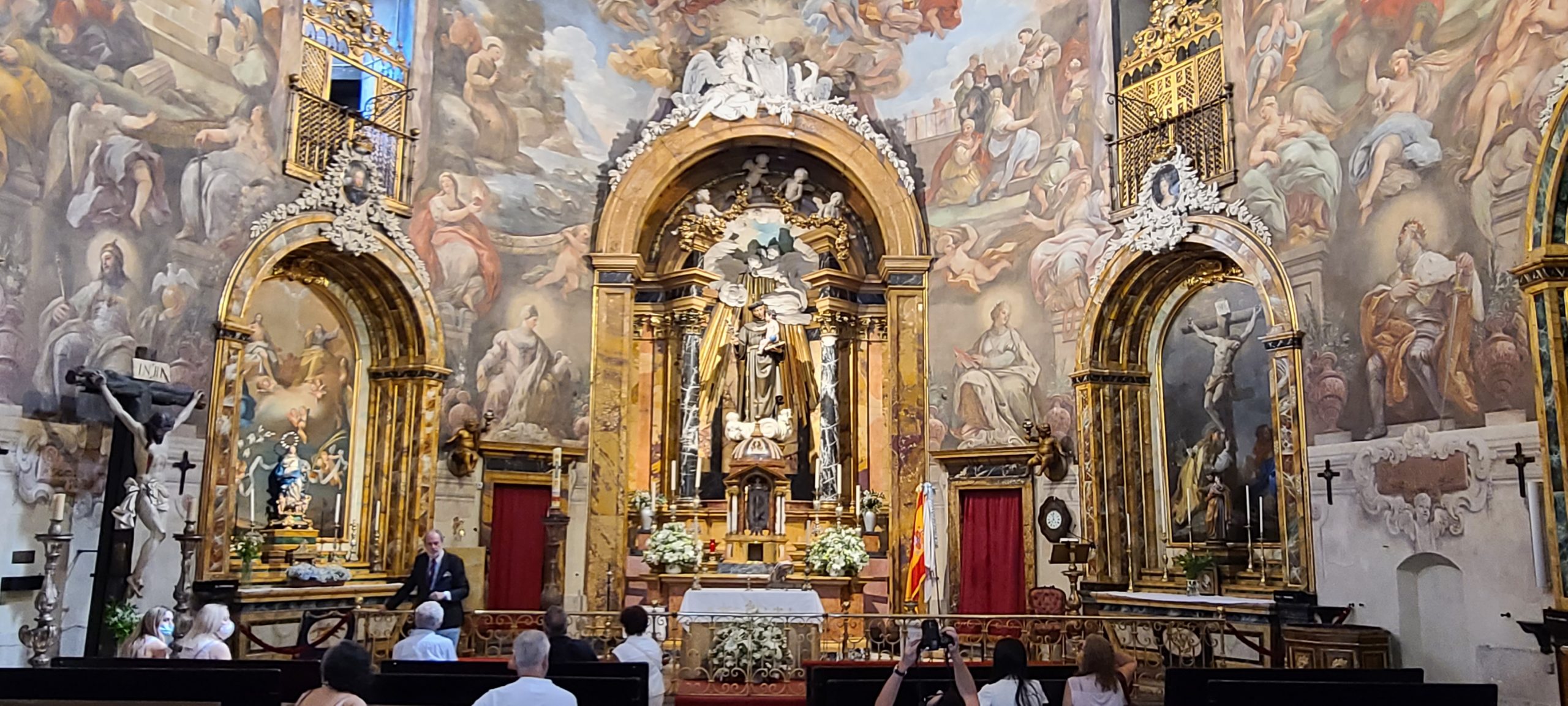
Resources:
https://es.wikipedia.org/wiki/Iglesia_de_San_Antonio_de_los_Alemanes
https://www.esmadrid.com/informacion-turistica/iglesia-san-antonio-alemanes
https://www.miradormadrid.com/iglesia-de-san-antonio-de-los-alemanes/
https://www.madridlowcost.es/algunos-de-las-curiosidades-y-secretos-de-madrid-mas-sorprendentes/
